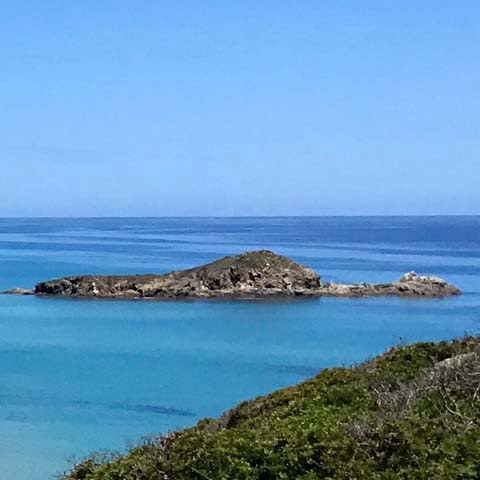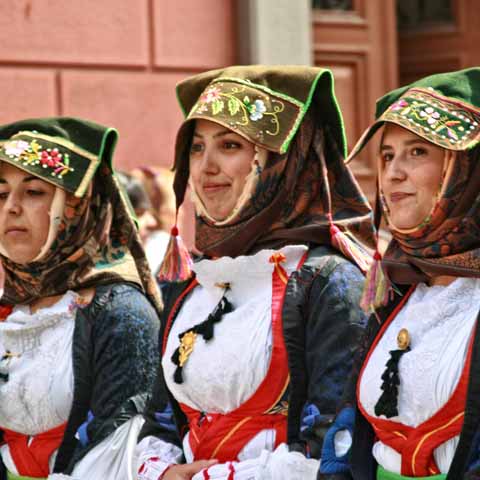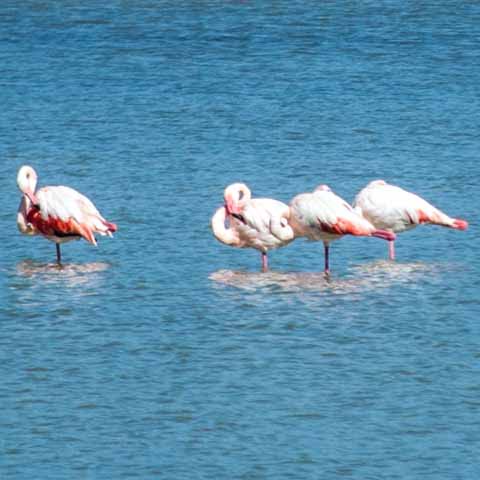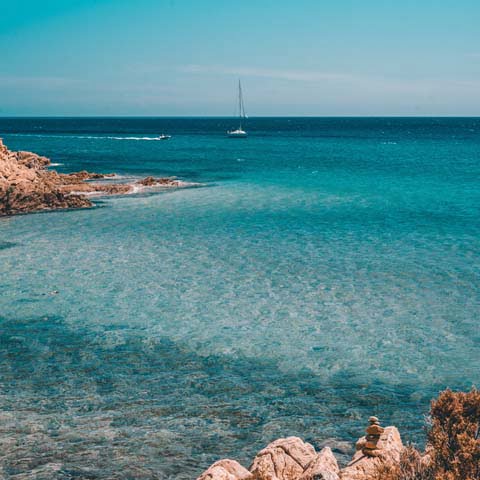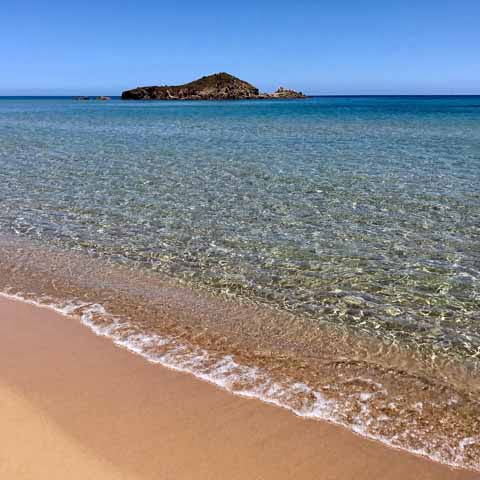The gorgeous Italian island of Sardinia is home to Cagliari, one of the most stunning and picturesque cities of the island. This large city is full of port activity, a medieval castle district, roughly a dozen museums, food markets, and miles and miles of beautiful beaches. This ancient town has enough activities to keep you busy every minute of the day. Enjoy the simple pleasures of Cagliari and an effortless natural beauty that will have you planning a return trip before you ever leave the shore.
FESTIVALS AND EVENTS IN CAGLIARI
Perhaps the most prominent religious event in Cagliari is the Feast of Sant’Efisio (St. Ephysius), which takes place annually at the beginning of May. The festival starts with a procession of thousands of people that proceed through the city wearing traditional Sardinian costumes. The procession historically ends roughly twenty miles from the city and is one of the largest religious processions in the Mediterranean. Legend dictates that St. Ephysius requested a procession on May 1st to the city from a plague.
The lawmakers of Cagliari said if the plague then disappeared the procession would be held annually and end at the place of Nora where the saint was martyred. By now, you know the ending to that story.
If you are visiting during the religious holiday of Easter, expect to see a number of Holy Week ceremonies. The marking of the holiday begins with a procession of the seven statues of the mysteries, and on Good Friday the city hosts a procession of the dead Christ, and Easter culminates in a joyous city-wide celebration of the risen Christ. Easter is one of the most widely celebrated holidays in Cagliari.
The Carnival period is another lively time to visit Cagliari. The celebrations feature lights, music, and various forms of entertainment including parades complete with costumes and masks. Carnival in Cagliari concludes with a fake King George “burnt” at the stake to officially conclude Carnival and mark the start of Lent.
OUTDOOR
Some of the best sights in Cagliari are not necessarily of historical landmarks and monuments. Many of the most peace inducing sights you will see can be found along the various streets of the city. As you stroll Via Roma, feel the sunshine warm your skin and take occasional shade under a canary palm as you walk along the shore. While here, be sure to check out the Cagliari Palazzo Comunale (city hall) in Piazza Matteotti where this street intersects Largo Carlo Felice.
Cagliari has a stunning view of the ruins of a second century Roman amphitheater. This ancient area is often called “the hundred steps” because of the number of steps within the theater that historians think once led to seats for roughly ten thousand spectators. Although the area is considered to be primarily ruins, the amphitheater still holds operatic performances here from time to time.
If the green areas of Cagliari are what make you smile, be sure to pay a visit to the nineteenth-century Botanical Garden at the University of Cagliari. This peaceful oasis is roughly twelve acres in size and is said to contain approximately two thousand species of tropical plants and succulents. Wander through the pathways of the garden among Mediterranean plants and trees and get lost in the natural green beauty of Cagliari.
The Castello District is one of Cagliari’s oldest areas and is home to many of the city’s most important monuments. Positioned on a hill, the district features historic defensive boundaries and towers as well as a fortress that dates back to the Middle Ages.
The city center of Cagliari is dotted with panoramic points that offer amazing views of the surrounding scenery. Among these is Viale Buoncammino, which features verdant trees and benches. This is one of the best places to admire Cagliari’s legendary sunsets. Other scenic panoramas can be admired from the Devil’s Saddle as well as the square of the Basilica of Bonaria.
INDOOR
Cagliari’s Citadel of Museums is home to the Museo Archeologico (Archeological Museum), the Pinacoteca Nazionale (National Art Gallery), the Luigi Cocco Ethnographic Museum, the Wax Anatomical Model Museum, and the Museum of Siamese Art.
The Museo Archeologico is a fantastic indoor activity and source of information for the history of Sardinia. Here guests can see an expansive collection of historical artifacts such as ceramics, copper ingots, Phoenician tomb furnishings, inscribed headstones, and Punic jewelry of ancient inhabitants. The medieval section of the museum includes terra-cotta, glass, statues, ceramics, and gold jewelry that are all reminiscent of that particular period.
Another fabulous historical Cagliari museum is the Pinacoteca Nazionale. This museum contains sculptures, paintings, and religious artifacts. Of particular interest to many visitors are the altar pieces that are part of the religious collection. The museum also typically displays jewelry, carpets, and textiles made in Sardinia during the nineteenth century.
The Ethnographic Museum is home to an impressive collection of local artisan crafts from the nineteenth century to the twentieth century. Items on display include furniture, textiles, jewelry, and more.
One of the more unusual museums in Cagliari is the Wax Anatomical Model Museum. The wax reproductions date back to the early nineteenth century and carefully illustrate the internal aspects of the human body in intricate detail. The museum is among the most important of its kind in the whole country.
The Museo d’Arte Siamese, the Museum of Siamese Art, showcases Siamese and Eastern art from the Stefano Cardu collection. Cardu once traveled to what is now Thailand, and when he returned to Cagliari, he donated many of his finds such as pottery, ivory, jewelry, paintings and more to the museum for display. Guests usually find this museum quite intriguing and somewhat different compared to the other museums in the area.
FAMILY
Touring the ancient district of Castello is like stepping inside the pages of a child’s fairytale. The area is set apart from the rest of the city on a hill by a combination of partial walls and two famous towers that share the entrance gate to Castello.
The Torre Elefante is one of the towers within Castello. This fourteenth century tower stands tall and once served as a guard tower. The name of the tower is partly derived from elephant statues that can be spotted several places throughout the tower. If inspired to do so, some tourists choose to climb to the top of this tower for a medieval adventure and outstanding views of the city below.
Take the family to visit one of the largest markets in Cagliari, Mercato di San Benedetto. Strolling through this market is a treat for the senses with vivid and bright colors, smells of fresh food, and the sounds of people selling and buying. Expect to find delicious seafood, locally made cheese, and quite an assortment of fresh fruits and vegetables. The market is covered, so if the weather is less than perfect, the market is still a great way to spend an hour or two.
KIDS
Just outside the busy city are some beautiful rolling hills and plenty of green space to explore. Here, families will find and enjoy a number of public parks that make for an excellent respite from sightseeing. One of the best parks to visit is Parco di Monte Urpinu because it offers wildlife and hiking trails all within a peaceful setting. A climb to the top of the park yields some amazing views of
Cagliari, and on a clear day, possibly even the sea. The climb is also a great way to let the kids work out a little excess energy and soak up some fresh air.
Cagliari is known for its miles of beautiful beaches. Here the shoreline is a combination of pristine sand, crystal clear waters, and typically loads of warm sunshine. Consider taking the kids down to a couple of the beaches for some sandcastle fun and frolicking in the ocean. Poetto beach is one of the more popular beaches, and the kids may enjoy participating in a once in a lifetime diving or surf school experience.
UNIQUE EXPERIENCES IN CAGLIARI
Deep under Cagliari are a network of caverns and tunnels that hold great mysteries and are the stuff of legends. In addition to the historical value of these sites, the candles that provide the lighting often make this underground experience a sought-after eerie adventure.
One of the most visited underground areas is the Prison of Saint Efisio because of the saint’s ties to the city. This cavern is thought to be where he was imprisoned shortly before his Roman execution.
The Crypt of Santa Restituta is a deeply historical site because of the archeological finds within that document the different civilizations that once inhabited the city.
The Galleria – Rifugio di via Don Bosco is a famous eighteenth-century tunnel that was once used as an escape and refuge during various wars.
Cagliari is the best destination to delve into Sardinia’s unique history and culture. While in Cagliari, travelers can explore pre-historic and historic monuments, visit a variety of interesting museums, and unwind in the stunning natural scenery that the island is known for.
Travel Guides
The Sardinia Region of Italy
The Cities of Sardinia, Italy
